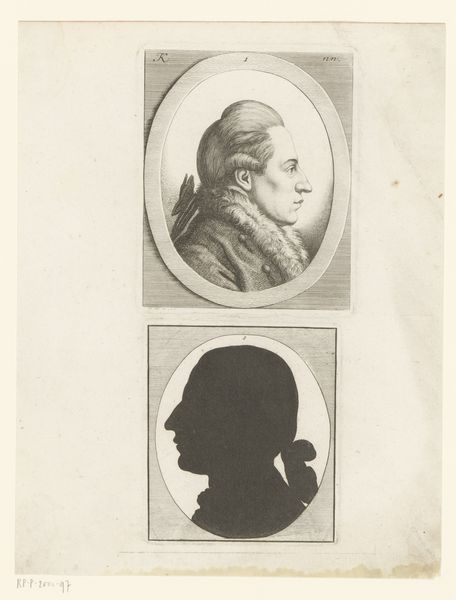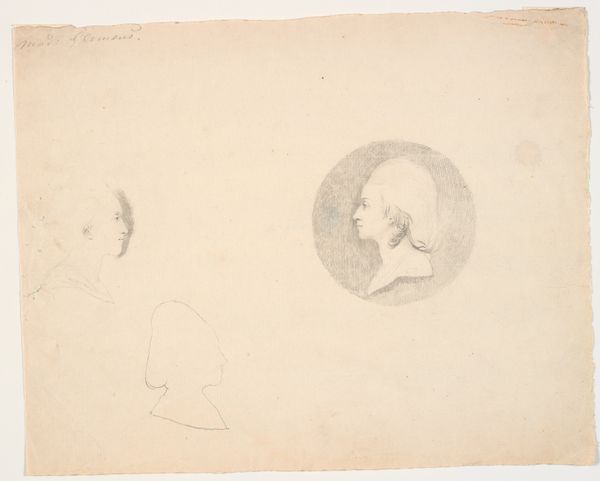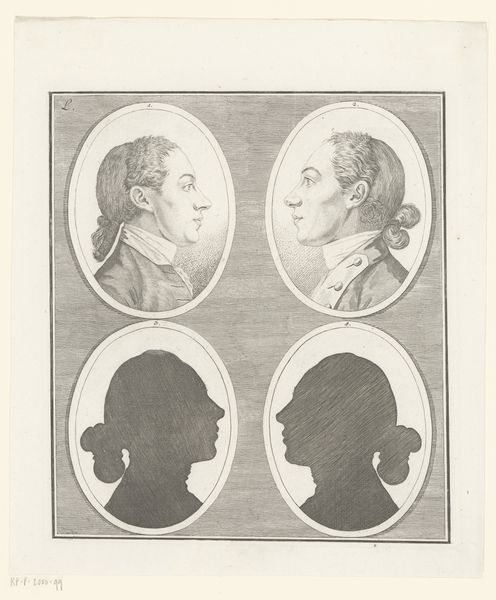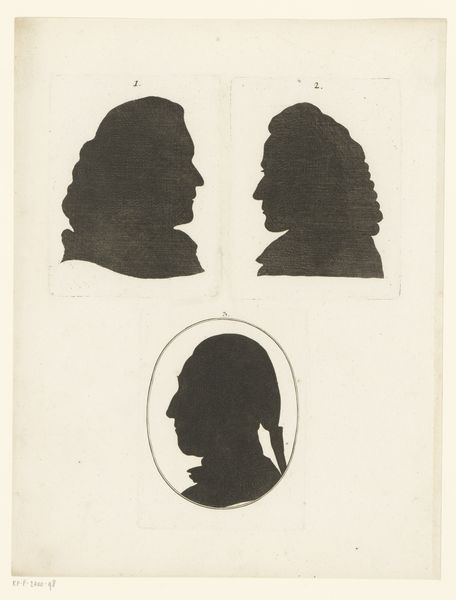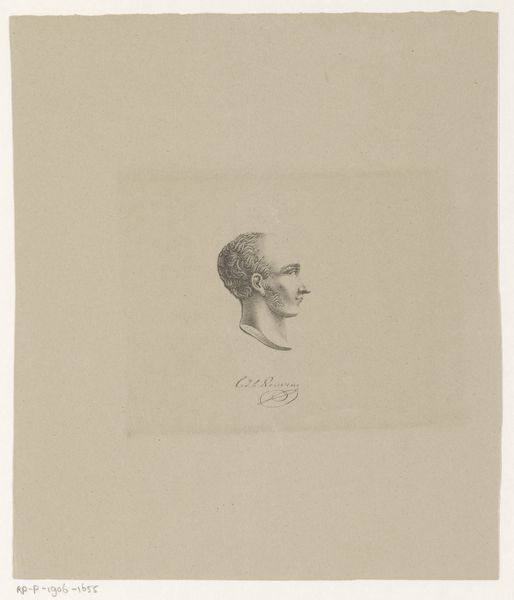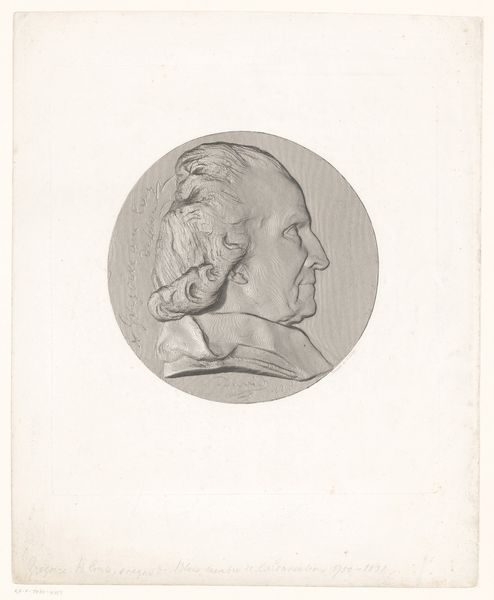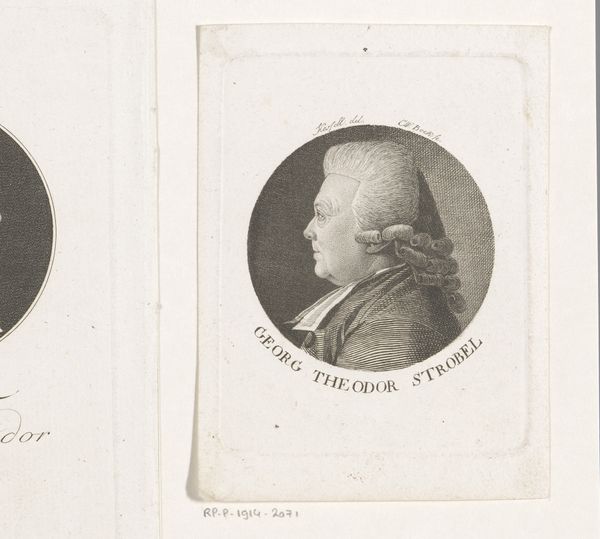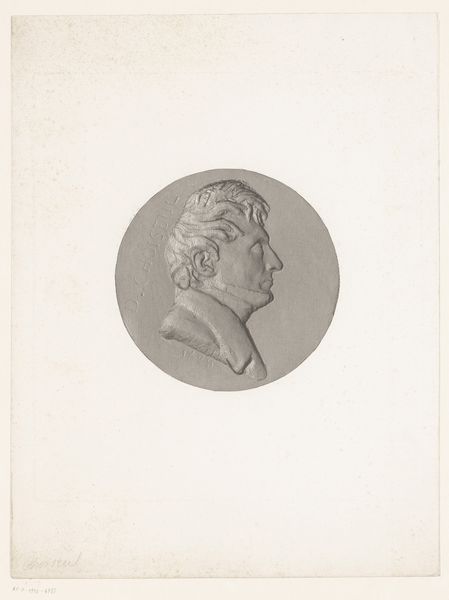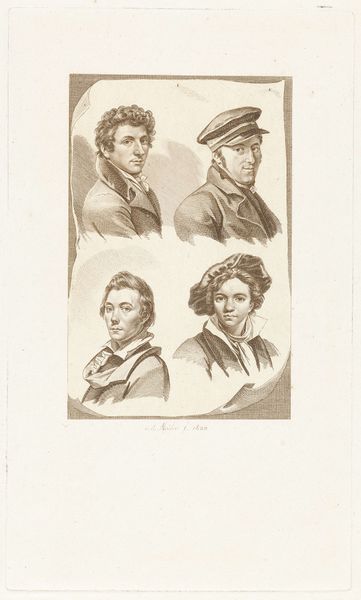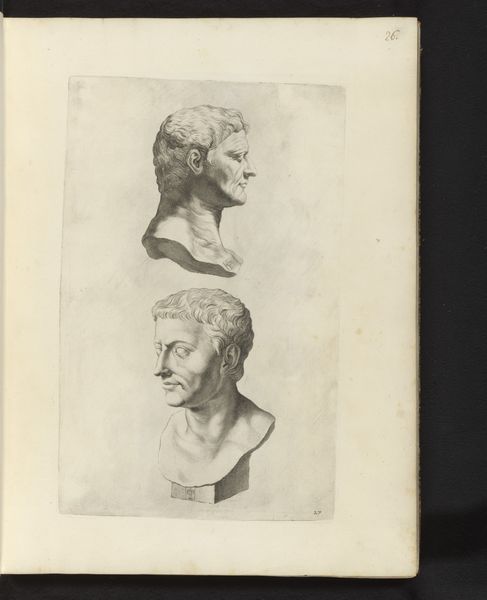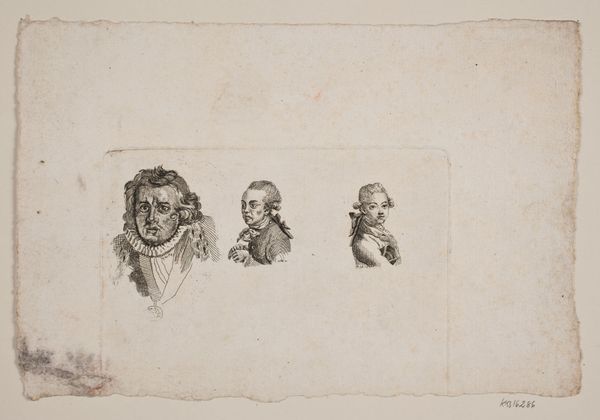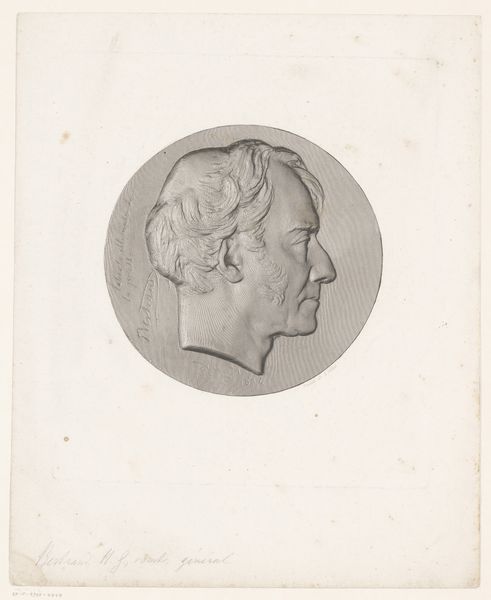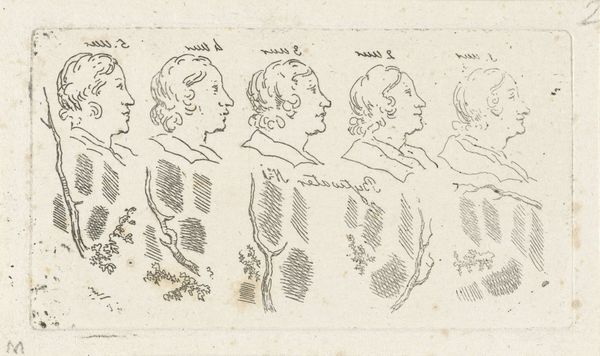
drawing, print
#
portrait
#
drawing
# print
#
cityscape
Dimensions: height 67 mm, width 80 mm, height 87 mm, width 70 mm
Copyright: Rijks Museum: Open Domain
Editor: This is an 18th-century print called "Four Male Heads, Two in Silhouette, in Ovals." It's attributed to an anonymous artist and held at the Rijksmuseum. I'm immediately struck by the stark contrast between the detailed portraits and the solid silhouettes. What do you see in this work? Curator: Immediately, I'm drawn to the historical and psychological weight of portraiture during that period. Silhouettes, in particular, emerged as an accessible, even democratic form of representation. The "shadow portraits," if you will, are really about presence and absence, aren’t they? What memories and associations are triggered by the missing features? Editor: That’s interesting; I hadn’t considered the “absence” part so much. Why do you think the artist mixed fully realized portraits with simple silhouettes? Curator: Perhaps to suggest varying degrees of societal access or perhaps some commentary on hidden identities. Faces fully rendered versus faces masked: It calls to mind power dynamics or social commentaries that the silhouettes symbolize, like anonymous whispers versus loud declarations of the time. Consider also the enduring visual language that this form of portraiture provides for us to contemplate collective cultural values. Editor: So, they might be saying something about social status or secrets, and those shapes carry so much history. It gives me a lot to think about, recognizing these portraits as echoes of historical voices. Curator: Precisely! These visual symbols speak volumes across centuries, hinting at stories beyond what we see on the surface.
Comments
No comments
Be the first to comment and join the conversation on the ultimate creative platform.
